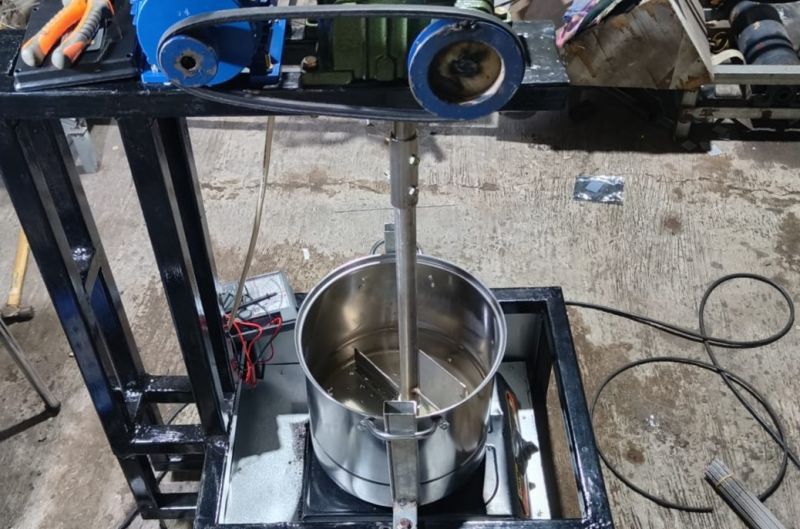Supporting MSMEs, Engineering Students Present Petis Processing Machine

Unesa.ac.id, SURABAYA—Petis is a very popular food ingredient in Indonesia, especially in Central and East Java. Petis is usually used as a seasoning in dishes or as a sauce for foods like pecel or tahu petis.
Traditional petis production requires a significant amount of time and effort, so some food entrepreneurs opt to use semi-automatic petis machines to help with the production process. However, these machines are not widely available in the market.
To address this need, Universitas Negeri Surabaya (UNESA) through the Faculty of Engineering team has created a semi-automatic machine to speed up the petis production process for MSMEs. This machine helped the FT team win 3rd place in the Appropriate Technology Innovation Competition.
"MSMEs complain that petis production is not always consistent, sometimes it burns. Stirring by hand can also be tiring," said Agung, one of the students on the machine innovation team.
Agung added that the machine can stir automatically to prevent sticking and the temperature can be controlled. The pot material is coated with an oil jacket, which is relatively safe, ensuring consistent temperature and stirring with an electric motor drive.

This machine can grind raw petis ingredients such as shrimp paste, shrimp, or fish into a smooth and thick paste. It can also assist in the filtering process, resulting in a finer petis.
"The petis produced will be mixed and stirred evenly by the stirring machine, ensuring consistent petis that is neither too runny nor too thick," he said.
This machine is a breakthrough that can help food entrepreneurs increase productivity and efficiency in petis production. There are several advantages to this petis processing machine. First, it can use two types of fuel: gas stoves and wood. Second, it can set cooking and cooling times and stop automatically when the process is complete.
Third, it is practical and easy to move around with wheels attached to each leg. "This machine has already been distributed to several MSMEs in Sidoarjo," Agung concluded.
This semi-automatic petis processing machine was created by Mochammad Hildad Ajiban, Kamaludin, Muhammad Nur Rohman, Wahyu Prawira Yudha, Aldin Kusuma, and Agung Setyo Pranoto. They were guided by Wahyu Dwi Kurniawan, S.Pd., M.Pd., and Rachmad Syarifudin Hidayatullah, S.Pd., M.Pd.[]
Share It On: